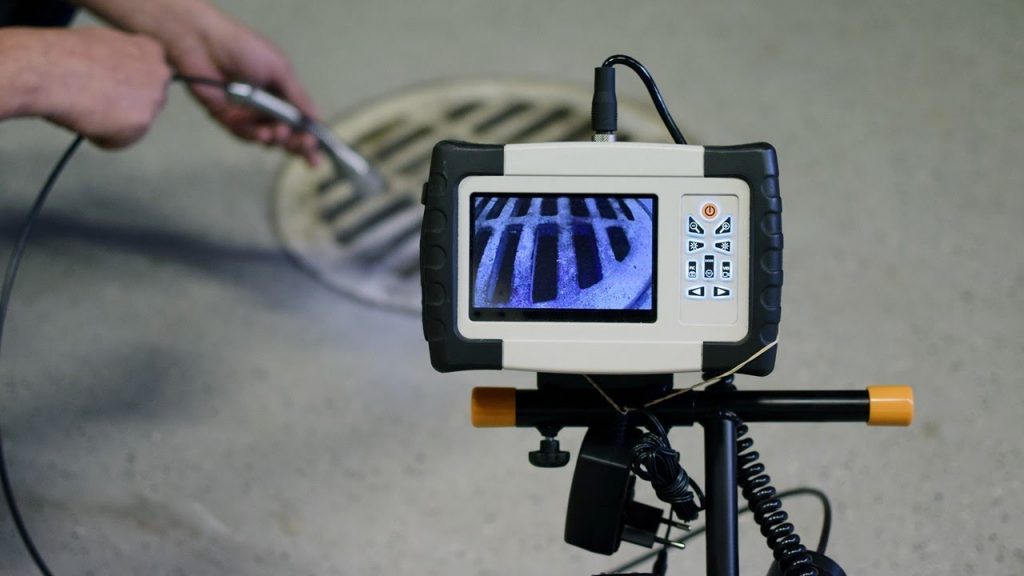
Sewer Scope Cameras vs. Traditional Plumbing
When it comes to fixing and maintaining plumbing systems, knowing the differences between sewer scope cameras and traditional inspections can help you make the best choice. Sewer scope cameras have changed how we inspect plumbing, offering several advantages over older methods. This article compares sewer scope cameras and traditional inspections, highlighting their benefits, limitations, and when to use each one.
What Are Sewer Scope Cameras?
Sewer scope cameras are special tools used to look inside pipes and sewer lines. They are attached to long, flexible cables that can move through pipes, sending live video footage to a screen. This lets plumbers see inside the pipes without having to dig them up or take them apart.
Benefits of Sewer Scope Cameras
Live Video Feed
Sewer scope cameras give a live video view of what’s inside the pipes. This helps plumbers quickly spot and diagnose problems like clogs, leaks, rust, and tree roots. Seeing inside the pipes helps avoid guessing and ensures accurate diagnosis.
Less Disruption
These cameras are non-invasive, meaning they don’t require digging or removing pipes. This reduces mess and keeps repair costs lower compared to traditional methods, which might disturb your property more.
Detailed Inspection
Sewer scope cameras provide high-quality images, allowing plumbers to closely examine pipe conditions. They can zoom in on problem areas for a clearer view, leading to better diagnoses and more precise repairs.
Accurate Problem Location
These cameras help plumbers find exactly where issues are in the pipes. This makes it easier to fix problems directly, reducing the need for unnecessary digging or removal.
Record Keeping
The camera footage can be saved and used later. This is useful for tracking the condition of your pipes over time, showing before-and-after results, and providing evidence if needed.
What Are Traditional Plumbing Inspections?
Traditional plumbing inspections usually involve physical checks and tests of the plumbing system. This might include using tools like augers or plungers for blockages, pressure tests, and manually inspecting accessible parts of the system.
Benefits of Traditional Plumbing Inspections
Basic Use
Traditional methods work well for simple problems like minor clogs or leaks. Basic tools and techniques are often enough for common plumbing issues.
Cost-Effective for Simple Issues
For straightforward problems, traditional inspections can be cheaper than using sewer scope cameras. Basic tools and manual checks generally cost less than specialized camera equipment.
Immediate Results
Sometimes, traditional inspections give quick results. For example, using an auger to clear a blockage can restore flow immediately, without needing detailed imaging.
Limitations of Traditional Plumbing Inspections
Limited View
Traditional methods can’t see inside the pipes as clearly as sewer scope cameras. Inspectors can only check parts of the plumbing system that are accessible, missing issues that are hidden.
Invasive
Traditional inspections might require digging, cutting into walls, or removing parts of pipes to access problem areas. These methods can be messy, disruptive, and costly.
Hard to Diagnose Complex Problems
Complex issues, like extensive pipe damage or tricky clogs, are tough to diagnose with traditional methods. Without visual proof, finding the exact problem can be challenging and might lead to costly trial-and-error repairs.
No Documentation
Traditional inspections usually don’t provide visual records of the plumbing system’s condition. This lack of documentation can be a drawback when monitoring changes over time or showing evidence to others.
Comparing Sewer Scope Cameras and Traditional Inspections
Here’s how sewer scope cameras and traditional inspections stack up against each other:
Cost
Sewer scope camera inspections typically cost more upfront due to the specialized equipment. However, the precise diagnosis and reduced need for digging can save money in the long run by avoiding extra repairs. Traditional inspections may be cheaper initially but could lead to higher costs if they miss problems or require more invasive repairs.
Accuracy
Sewer scope cameras offer higher accuracy with real-time, high-quality images. This precision helps in accurately identifying and addressing issues. Traditional methods might not provide the detailed view needed for complex problems, leading to potential misdiagnoses and more trial-and-error repairs.
When to Use Each Method
Sewer scope cameras are best for:
- Diagnosing complicated plumbing issues
- Inspecting hard-to-reach or buried pipes
- Identifying and documenting pipe damage or blockages
- Planning repairs and avoiding unnecessary digging
Traditional inspections are suitable for:
- Dealing with simple clogs or leaks
- Performing basic maintenance
- Handling straightforward plumbing problems that don’t need detailed imaging
Conclusion
Sewer scope cameras and traditional plumbing inspections each have their strengths and weaknesses. Sewer scope cameras provide a modern, non-invasive way to inspect pipes with high accuracy and detailed records, making them ideal for complex issues and minimizing disruption. Traditional inspections are effective for simpler problems but might involve more invasive techniques and lack the detailed visibility of modern cameras.
Choosing the right method depends on your specific plumbing issues. The goal is to use a technique that accurately identifies and addresses the problem, ensuring effective repairs.
